The Country Life Guide to Marrakech: Where to shop, stay and eat
Magical Marrakech is a tale of two halves, says Hetty Lintell, who enjoys both going back in time and its new, design-led focus.


You’d be forgiven for feeling a little trepidation on first entering the main Jemaa el-Fnaa square (main image) in the middle of Marrakech’s vibrant Medina, which occupies Marrakesh’s original fortified citadel, especially after sunset.
The square has a mysterious atmosphere — all fragrant smoke, snake charmers, jittery monkeys and the pungent smell of rich spices filling the air. I’ve visited the city countless times since my university years and although so much has changed, so much hasn’t — but it never fails to surprise.
The best bit? It’s a short, three hour flight from London and for full immersion into a totally different time and place, to a city steeped in history where days are punctuated by the call-to-prayer reverberating off centuries-old walls.
The city can be devoured in a few days with dedication — or over a week, should you wish to take things more slowly.
What to do

Shop for rugs
If you’re staying inside the confines of the Media then you must explore the souk on foot.
Stock up on the finest quality spices or fall for beautiful crockery to decorate walls and dressers at home (and to eat from, of course).
Rugs have been woven by the people of Morocco since the Paleolithic Era and it’s nearly always better value to buy them here and ship them home, than to purchase them at home.
Sign up for the Country Life Newsletter
Exquisite houses, the beauty of Nature, and how to get the most from your life, straight to your inbox.
I’ve even been known to bring a spare suitcase with me for rug transportation purposes.
Try the carpet kings Soufiane Zarib and Mustafa Blaoui (warning: there’s no sign on the door).
Set aside a good few hours for proper perusing and then pop next door to Valerie Barkowski for beautiful, tasselled bath towels.
For rugs with a modern edge try LRNCE.
Shop for clothes
For the best, original textiles, head to the city’s industrial district where some of the more trendy designers and makers have factories and boutiques.
I found some beautiful printed dresses in Topolina.
Next, hop along to Marakeshi Life for exquisitely woven, striped kaftans, trousers and shirts. If you ask nicely, they’ll show you the craftspeople at work infront of the looms.
You’ll need to get a taxi to this area — it’s about 20 minutes from the Medina — and you can ask your driver to wait for you, or even to drive you from shop to shop for a small fee.
Where to stay
In the Medina

I would recommend four nights total: two outside and two inside the Medina, at a riad or boutique hotel.
My favourite is La Sultana (rooms from £479), where you’ll be greeted by cheerful staff wearing red uniforms and Fez hats and proffering trays of stuffed dates and fresh mint tea (drink this at every opportunity, and pretend not to notice when they add sugar. It’s too delicious).
Behind the unassuming entrance you’ll discover opulent interiors, heavenly indoor courtyards and balconies festooned with bougainvillaea.

There are plenty of places to hide away with a book in hand — and although the hotel was full when I visited, it couldn’t have felt more peaceful. Often the only visible company is a flutter of tweeting birds.
At La Sultana the food is traditional with a twist — fragrant tagines share space on the plate with Italian and French influences.

Bedrooms are named after animals and have an old school charm — the Elephant Suite is the finest of them all though.
There is a proper Moroccan spa (I say ‘proper’ because the hammam is thorough and the massages are gloriously firm). Book in for complimentary yoga on the rooftop (against a dramatic backdrop of the Atlas Mountains) followed by a breakfast comprising traditional berber pancakes and moorish cakes.
Out of town
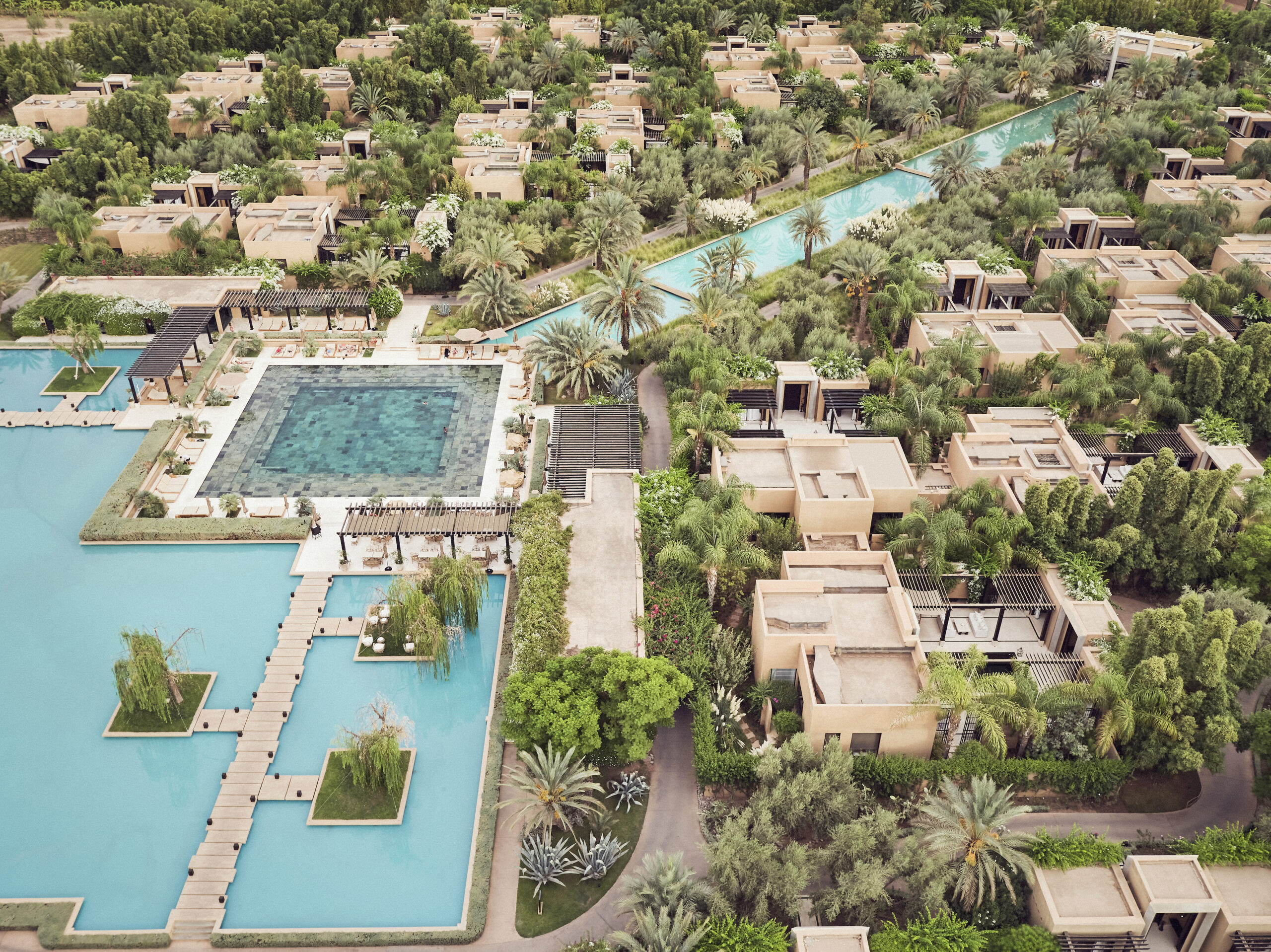
Grandeur knows no bounds at the Mandarin Oriental (rooms from £1,030).
Of the 61 ‘rooms’, 54 are private villas with their own swimming pools framed by pristine white, upholstered loungers.
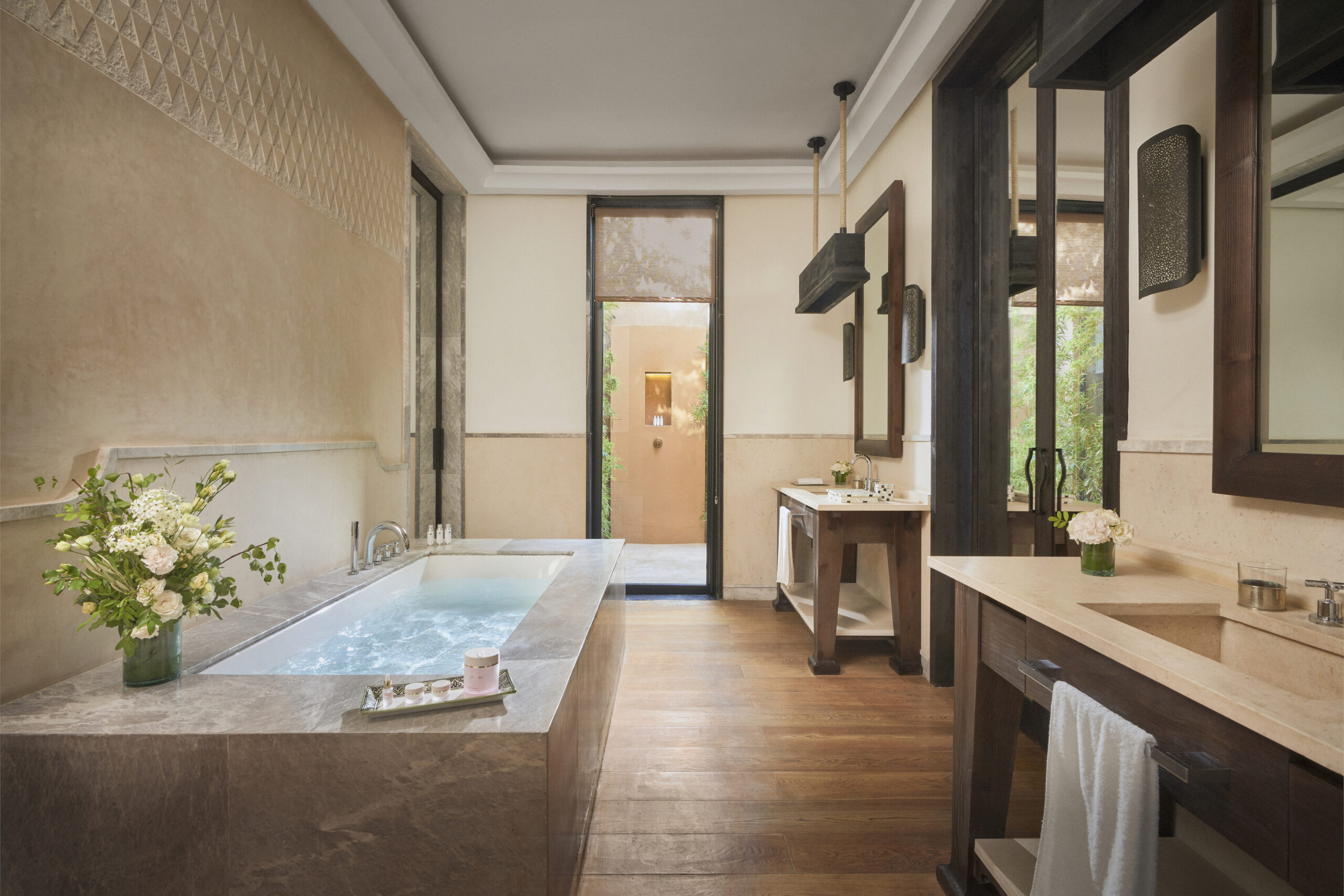
All of the bathrooms are as big as my London flat, boasting tubs for wallowing in and showers that double as steam rooms (excellent, incidentally, for smoothing out creased dresses).
You’d never leave if it wasn’t for the incredible communal pool that meals are regularly served alongside.
Come Easter, the hotel lays out an extensive buffet and a roaming mariachi band. The people watching is exemplary.
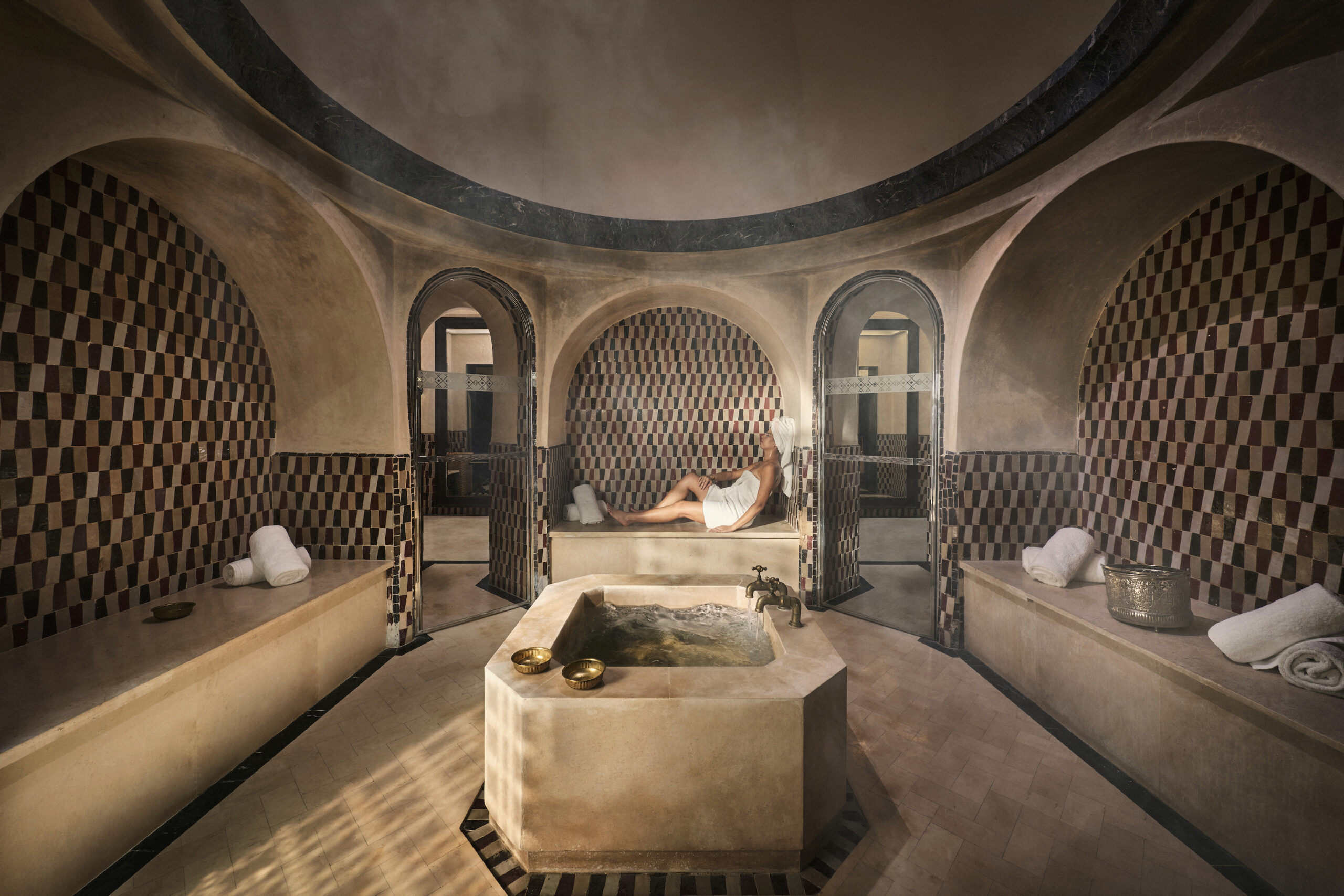
Although the Mandarin Oriental group has hotels all over the globe, this Marrakech offering has a real sense of place, down to the astonishing gardens which harbour a kitchen plot that stocks the hotel’s fridges, a petting farm and the Kid’s Kasbah (club).
The spa is one of the largest in the city and treatments are exquisite — to be enjoyed in your own suite.
Where to eat
Plus 61 is all about minimalist design and maximalist flavour. Try the crispy chicken and juicy cabbage slaw (it’s big enough to share). The cocktails are herby, and, dare I say, healthy? Or go for an organic wine…or two.
Dine on the rooftop at El Fenn in order to admire the lovely decor — striped cushions and walls jam-packed with colourful plates. Start with cocktails and nibbles in the bar area before settling down at a table to fish tagine.
NOMAD Marrakech and Imida both serve up incredible and inventive dishes. And they both have wonderful rooftops. Neither serves alcohol, but the mocktails and juices more than make up for it.
Hetty Lintell masterminded the launch of the magazine’s Luxury pages back in 2012 and has overseen them ever since. She also edits Gentleman's Life, Country Life’s annual men’s lifestyle supplement, and styles and art-directs all of the magazine's fashion and still-life shoots. Her real forté, however, is compiling top-notch goodie bags for any party the magazine hosts. The best-dressed member of the team, Hetty can normally be found darting between Bond Street and a photographic studio in East London.
-
 The Country Life guide to Somerset: What to do, where to stay and how to eat
The Country Life guide to Somerset: What to do, where to stay and how to eatSomerset is rich in natural beauty and history, but it is its wealth of small-scale food and drink producers, farmers and makers that really set it apart from the competition. Find out how to make the most of it all with our indispensable guide.
By Natalie Millar-Partridge
-
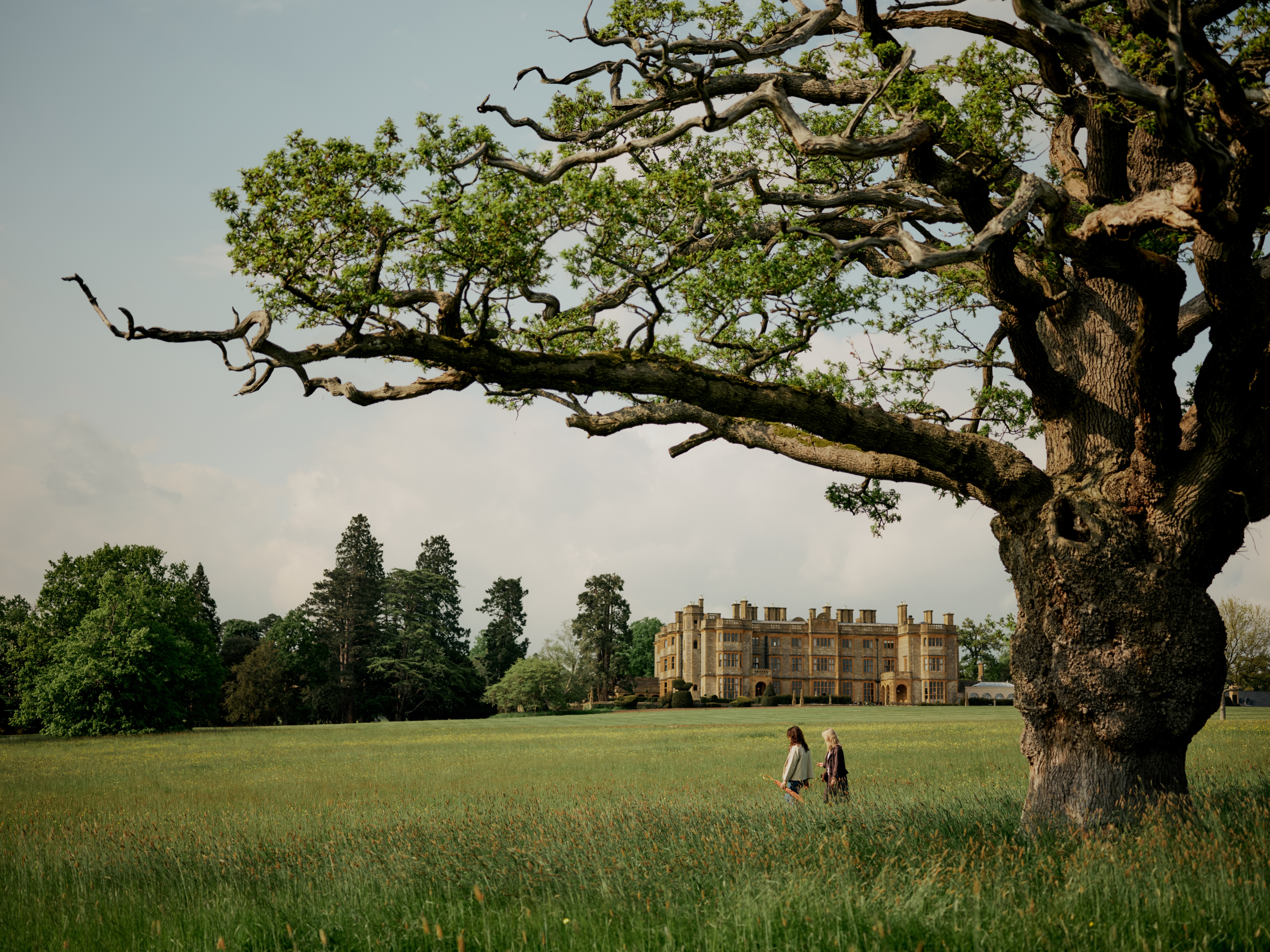 ‘I don’t want to oversell it but they are the best pumpkin pancakes in the universe’: Country Life’s unbeatable guide to Oxfordshire
‘I don’t want to oversell it but they are the best pumpkin pancakes in the universe’: Country Life’s unbeatable guide to OxfordshireWhere to stay, where to eat and what to do in Oxfordshire (with some borderline Gloucestershire snuck in), according to the people who love it and live there, including Lady Carole Bamford.
By Jo Rodgers
-
 The Country Life guide to St Tropez: Where to go, what to see, where to stay and what to eat
The Country Life guide to St Tropez: Where to go, what to see, where to stay and what to eatSt Tropez — or Saint-Tropez — is one of the best know holiday destinations in the world and has, over the years, attracted the likes of Coco Chanel, Elsa Schiaparelli and Brigitte Bardot. Gilly Hopper reveals what to see, where to stay and what to eat.
By Gilly Hopper
-
 The Country Life guide to Capri, Italy: Where to go, what to see, where to stay and what to eat
The Country Life guide to Capri, Italy: Where to go, what to see, where to stay and what to eatFirst popularised as a holiday destination by the Roman Republic, the Italian island of Capri shows no signs of losing it's allure.
By Country Life
-
 The Country Life guide to Dorset: Where to go, what to see, where to stay and where to eat
The Country Life guide to Dorset: Where to go, what to see, where to stay and where to eatMagnificent coastline, beautiful countryside, irresistible romantic ruins and wonderful local produce make Dorset a superb place to go. Here's our guide to what to do, where to stay and what to eat.
By Rosalyn Wikeley
-
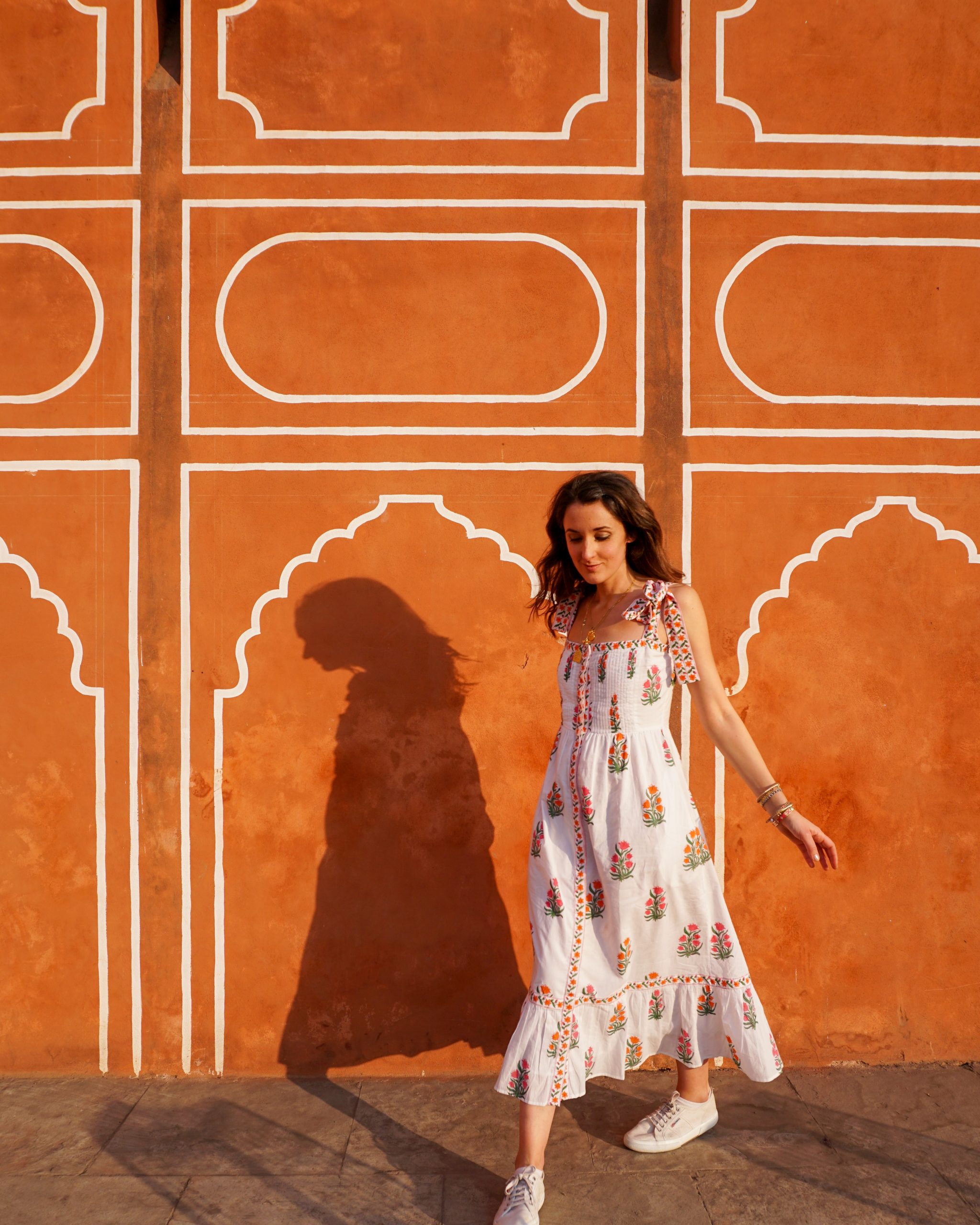 Jaipur: Rosanna Falconer's unbeatable guide to India's most intoxicating city
Jaipur: Rosanna Falconer's unbeatable guide to India's most intoxicating cityIn our first of many expert-written, insider travel guides, Rosanna Falconer reveals everything you need to know about Jaipur — India's Pink City — from when to go, to where to stay.
By Country Life
-
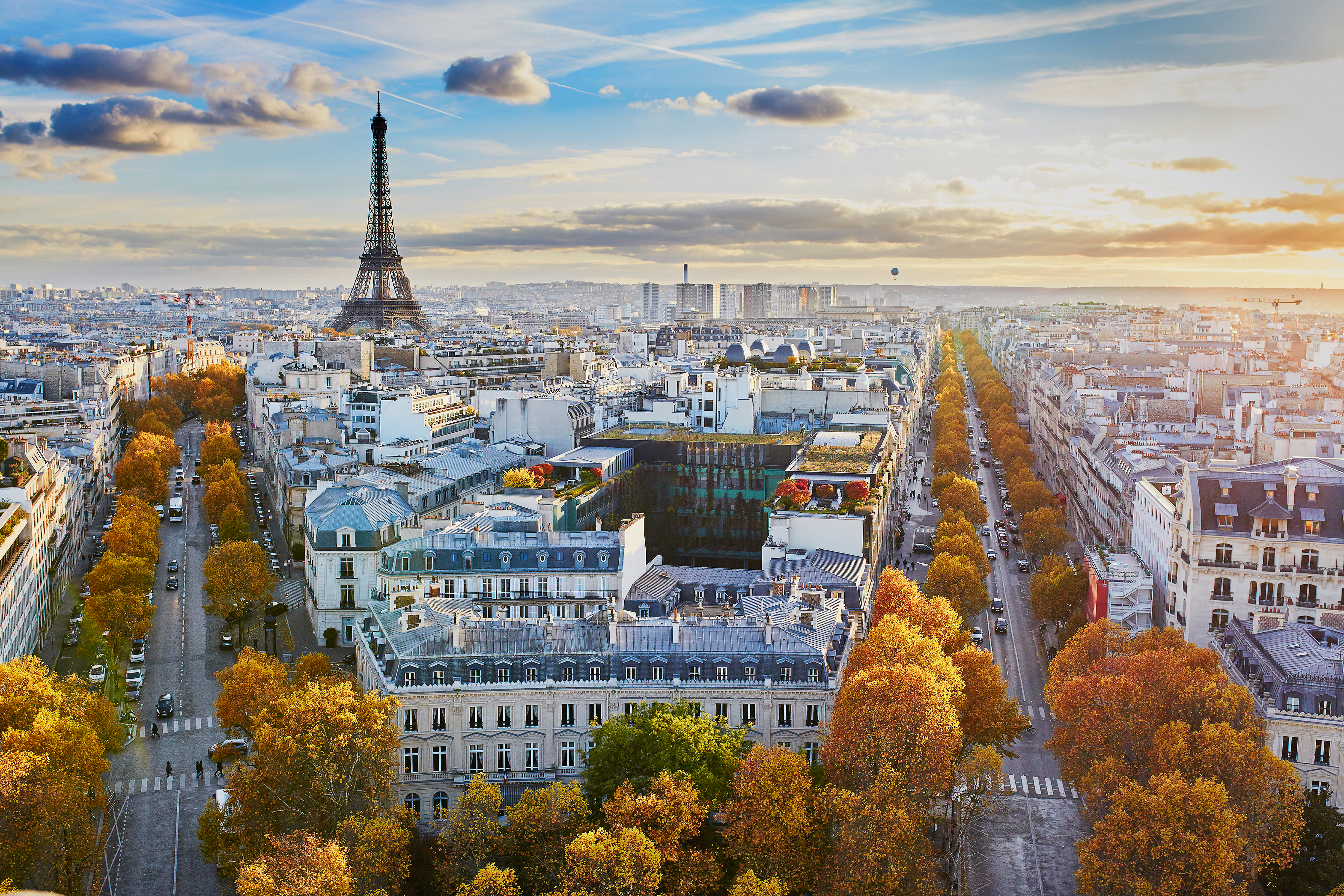 The Country Life guide to Paris, France: Where to go, what to see, where to stay and what to eat
The Country Life guide to Paris, France: Where to go, what to see, where to stay and what to eatParis is always a good idea, so here’s our guide to what to do, where to stay and what to eat.
By Country Life
-
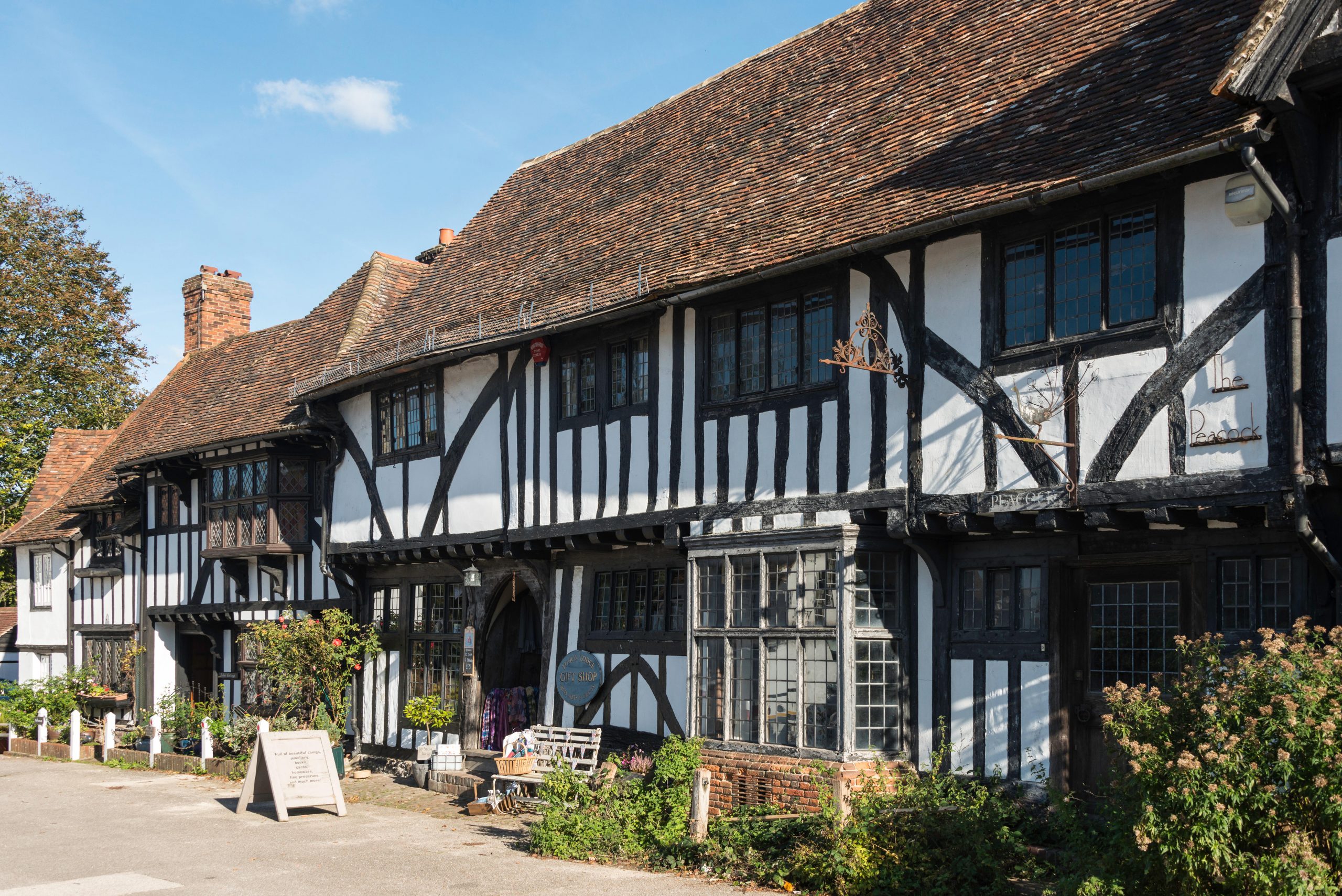 The Country Life guide to Kent: Where to go, what to see, where to stay and what to eat
The Country Life guide to Kent: Where to go, what to see, where to stay and what to eatFrom its rich history and rugged coastline to fast-evolving cultural and culinary scenes, here's our guide to what to do, where to stay and what to eat in Kent.
By Ben Olsen

